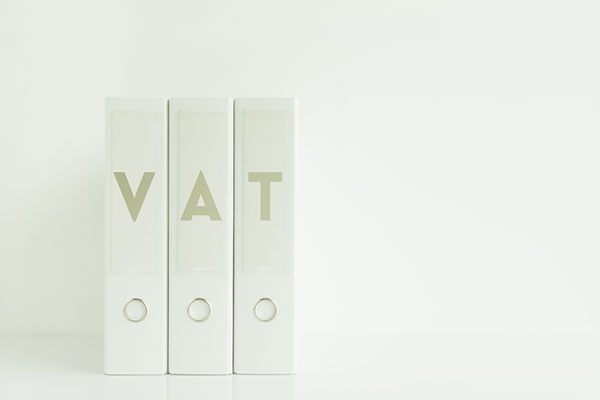VAT and your business

If your business turns over more than £1,635 a week, then you need to register for VAT. At Panthera, we have clients across all different sectors and of all different sizes. For our smaller customers, registering for VAT is something that causes concern and anxiety. Not only have they gone through the experience of opening a company and then running it (and everything it entails), here comes something new to comply with.
When your business needs to register for VAT, your accountants here at Panthera will do all the hard work for you, not only with registering but by making sure that you file your VAT reports to HMRC and make your payments on time.
Get VAT-registered and go digital
Bookkeeping has changed over the last five years. It used to be the case that a bookkeeper would come to your premises once a month, file all your invoice, categorises all your expenses, complete Sage Line 50, and send it back to your accountants’ HQ.
Online bookkeeping has changed all that. As a business owner, you’re now more in touch with your finances, profitability, expenditure, and cash flow than ever before. Whereas filing your VAT return to HMRC used to be a laborious, time-consuming, and complicated task, online bookkeeping has made it easy.
Panthera encourages all of our valued clients to choose the (brand name) online accounting package. That and your Panthera accountant will take away all the worry and stress surrounding VAT from you so you’re free to run your business, make new sales, and look after your customers.
The only thing you’ll need to concern yourself with about VAT as a PANTHERA customer is making sure you can pay it on time. If, on the rare occasion, you can’t pay your VAT on time, we can even help with that.
VAT – how do you work out how much VAT is due?
For most VAT-registered businesses, there are two parts to your VAT bill – your input VAT and your output VAT.
Input VAT is the VAT you pay to your suppliers on the goods and services you buy in for your business. Output VAT is the VAT that you charge to customers when you sell goods and services.
Once you have both your final input VAT and output VAT figures, you take the input VAT from your output VAT and that’s the bill you have to pay to HMRC. Occasionally, particularly in times of growth or heavy investment in a business, you might be entitled to a VAT refund from HMRC however VAT refunds are generally very infrequent.
What are the rates of VAT?
There are three rates of VAT in the UK – 20%, 5% and 0% (so-called “zero-rated”).
Most businesses charge the standard rate of 20% of VAT to their customers on the goods and services they sell.
The 5% rate applies to a very restricted range of products including gas and electricity bills, children’s car seats, and mobility equipment for people over the age of 59.
The 0% (zero-rated) VAT rate is used across a much broader range of products than the 5% rate. You charge the zero rate of VAT if you sell items like food, children’s clothes, children’s shoes, newspapers, books, and motorcycle helmets.
When do you pay VAT?
There are a few different types of VAT system running in parallel. When you work with Panthera, we get to know you and your business so you can rest assured that your Panthera accountant will put you on the most suitable VAT plan for you.
Most businesses work on the standard VAT system. On the standard system, you submit your VAT returns electronically to HMRC one month and seven days after the end of your VAT quarter. You will generally make your VAT payment at the same time.
Many business owners think of VAT as a short-term cash flow loan from HMRC. However, when the money is in your bank, prior to payment, you have to be careful with it. It’s not your money – it’s the Government’s. As a VAT-registered business, you are their unpaid tax collector.
When VAT is payable, for most businesses, it will be a similar figure to between three and seven weeks’ turnover. It’s the biggest regular payment you’ll make as a business owner with the possible exception of wages.
Cash VAT versus accrual VAT
When you make a sale, when does it count for VAT purposes? When you make the sale or when you receive payment.
If you turn over £1,350,000 a year or less, the choice is yours. If you add the output VAT to your VAT bill upon the receipt of cash into your bank, you’re using the cash accounting VAT system. If you add the output VAT to your bill when you issue the invoice, you’re using the accrual VAT system.
Whichever method you choose, as long as you’re turning over less than the threshold amount of £1,350,000, you don’t have to inform HMRC.
If yours is the type of business where it can be difficult to get customers to pay and where you generally send out invoices with a 30-day settlement period, it would be better for you to use the cash accounting system.
Let’s say you makes sales of £30,000 a month and all the goods and services you charge VAT at 20% on. And let’s say that your customers take, on average, 60 days to pay you.
Over the course of the VAT quarter, you’ll issue £90,000 worth of invoices. At 20%, that £90,000 will generate £18,000 worth of output VAT.
Your problem is that, if customers are taking 60 days to pay on average, you’ll actually only receive £30,000 plus VAT worth of cash (£6,000) into your account in the quarter where you issue £90,000 plus VAT worth of invoices (£18,000).
That means, on your first VAT bill, you’ve only actually collected a third of the VAT that you’ve invoiced for. Using an accrual basis, your VAT bill will be £18,000 minus whatever input VAT you’ve paid on goods and services you’ve bought in. If you use the cash accounting VAT system, your VAT bill will only be £6,000 minus your input VAT.
Particularly for smaller companies and companies charging VAT for the first time, the accrual VAT system means you’ll have to pay £12,000 more in cash to HMRC than you would with the cash accounting system.
In nearly all cases, particularly for newly-registered companies, we nearly always recommend you choose the cash accounting VAT system.
VAT Annual Accounting
HMRC also offers a VAT annual accounting scheme for businesses turning over less than £1,350,000.
With annual accounting, you submit one VAT return a year and then make advanced payments to your VAT bill. At the end of the year, if you’ve paid too much VAT, you get a refund. If you’ve paid too little, you’ll get a final “balancing bill” which needs to be paid two months after the end of your accounting period.
The amount of VAT you’ll pay will be based upon your last return. If you’re new to VAT, you can estimate the amount of VAT you’ll pay.
You can choose to pay your VAT monthly or quarterly. If you pay monthly, your VAT direct debit payments will be collected at the end of months 4, 5, 6, 7, 8, 9, 10, 11, and 12. HMRC will collect 10% of your estimated bill on each payment. For quarterly payers, the deadline dates are at the end of months 4, 7, and 10. HMRC will collect 25% of the estimated bill if you’re paying every three months.
Flat rate VAT
There is also a flat rate VAT scheme. It doesn’t save your business any money but it does make your paperwork a lot easier than the standard quarterly system.
Flat rate VAT ignores both the input and output VAT. What it does instead is take your VAT-inclusive turnover and charge you a percentage of it. Every time you issue an invoice, you have to keep that part of the payment you receive back from your customer so that you can pay it over to HMRC when your bill is due.
Each sector has its own flat rate – for example, the flat rate VAT for estate agents is 12%.
Let’s say you’ve sold a house and you’re charging your client £2,000. You would add VAT to that at 20% making the final bill £2,400. Under the flat rate VAT scheme, you hold back 12% of that £2,400 for payment - £288.
That £288 is added to all the other 12% deductions you make from your invoices over the quarter and the final figure is the VAT bill you pay to HMRC.
With flat rate VAT, you cannot claim for input VAT except on certain assets over £2,000. Click here to see HMRC’s guidance on what you can claim back input VAT on.
Beware
HMRC expect you to pay your VAT on time. If you’re late filing your return or paying your bill, you will be put under a surcharge period for a year. There’s no penalty for being on a surcharge but it does mean that, next time you miss a VAT payment, the likelihood of being fined increases. Fines can go up to 15% of your total VAT bill.
But what if your business does not have the money to pay its VAT?
You can ask HMRC for “Time To Pay”. Time To Pay is a scheme which allows businesses to spread tax bills over a longer period with shorter repayments when making full payment could jeopardise the future of your company.
You need to phone HMRC to request a plan. When you speak with an advisor, you should:
• inform them that you can’t pay your bill in full,
• how much of the bill you can afford to pay now,
• how long you need to pay the rest of the bill off in equal instalments, and
• that you’ve approached friends, family members, and financial institutions to try to raise the money but that you’ve been unsuccessful in all of your approaches.
In most cases, HMRC will grant you the extra time you need. They will insist that they collect the payments via direct debit. Please be aware that if a direct debit payment is unsuccessful, HMRC are likely to cancel the plan and demand payment in full.
Get VAT ready
The way that VAT is reported and paid is changing from April 2019 with the introduction of Making Tax Digital so it’s time to get ready for it.
Your Panthera team are ready to help you with all VAT related enquiries. Give us a call on 01235 768 561 or email enquiries@pantheraaccounting.com.

